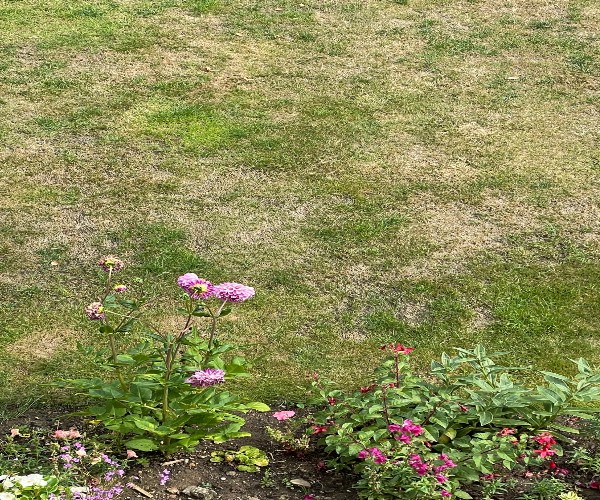- Lawn Turf
- Artificial
- Soil
- Timber
- Composite Decking
- Paving & Stone
Get In Touch With Our Experts Today!
Give us a Call! - Seed & Fertiliser
- Dressing
- Bark

August 16, 2022
Like all of us, grass and plants struggle with the heat, especially when there’s a lack of water. The first half of this year has officially been the driest since 1976; receiving only a fifth of the rainfall we’d usually expect. Which essentially means we’ve missed out on 2-3 months worth of rain. A visible reaction to this is that our lawns start to look more like the Sahara Desert rather than the rainforest green we’d prefer. So why has our grass changed colour?
Let’s go back to basics…
Grass turns brown when its roots aren’t absorbing important nutrients. This tends to occur during the winter months and is a natural part of grass’ lifecycle, allowing it to lay dormant during this period (a bit like hibernation). But it can also happen during extreme weather conditions, such as a heatwave.
Like the leaves in plants, grass blades have tiny little holes called stomata that are an essential part of the photosynthesis process. When there’s limited water in the ground, the grass closes the stomata stopping water escaping from the blade and returning it back to the root. Once the soil rehydrates the grass will awaken, restart its cycle and return to its natural colouring.
The important thing to remember is that your grass is dormant, not dead. It’ll just need a little TLC to wake up and there are a few things you can do to help:
New turf can take around 6 weeks to build strong roots. If you have just rolled out a luscious new lawn then it might still be establishing its root system. It’s important to not let your fresh lawn go dormant, so ensure you’re removing any thatch, don’t mow it too short and regularly irrigate it.
With regular irrigation this can take about 3-4 weeks. But like we said, only start irrigation if you plan to be consistent throughout the summer. You also need to bear in the mind the current water levels and monitor the amount of water being used or wasted.
Another reason your grass might not look as fresh as usual is because the grass has died. This can be caused by several factors but here are a few tests you can try to check whether your turf is dead or dormant:
If your grass has died or the dry summer has inspired you to refresh your lawn, then look no further! We have a range of high quality turf to suit any style of garden. Or if you’re looking for something with a little less maintenance, our artificial turf may be the best option. If you’re unsure, ready to order or need further advice then please get in touch, our friendly team are ready to help.
CALL US NOW ON 01234 818 253